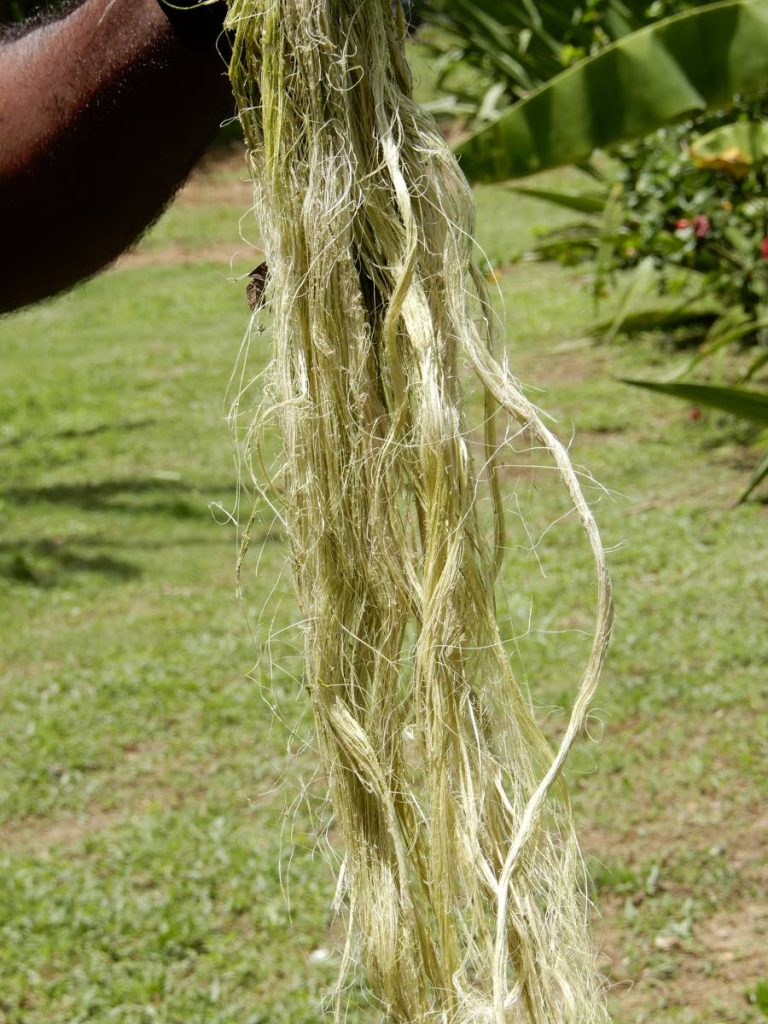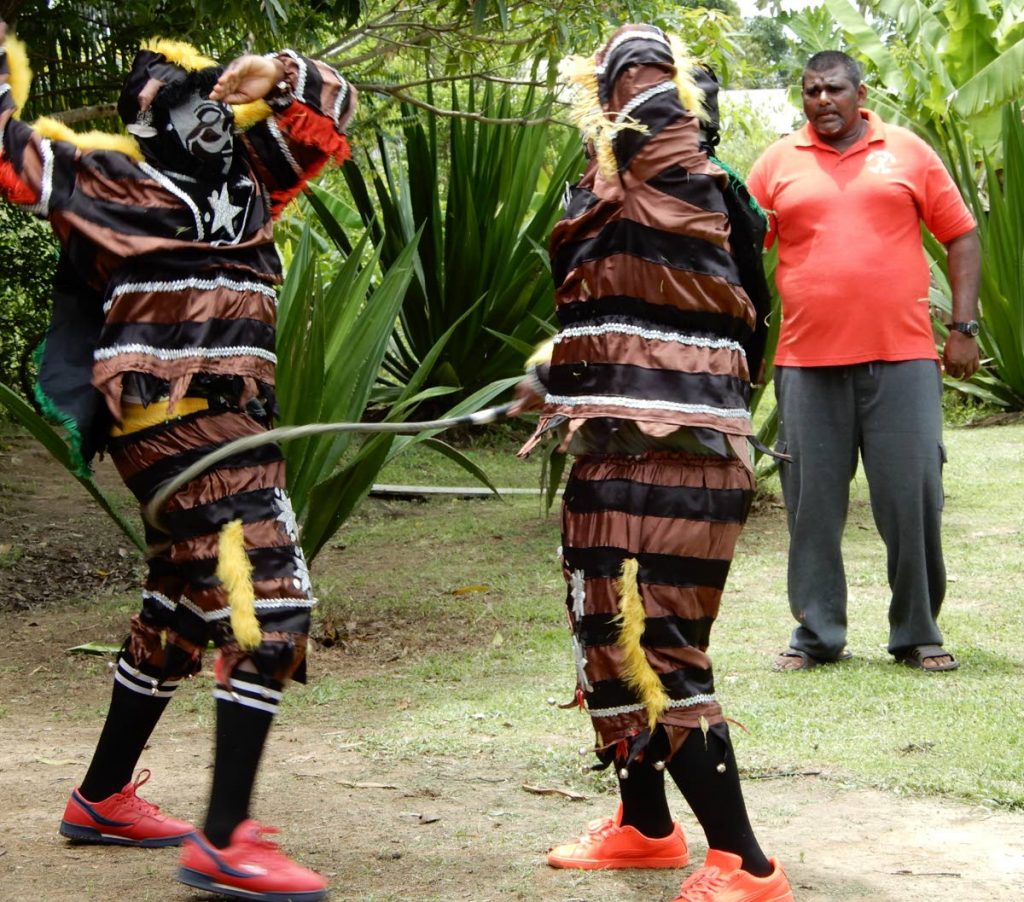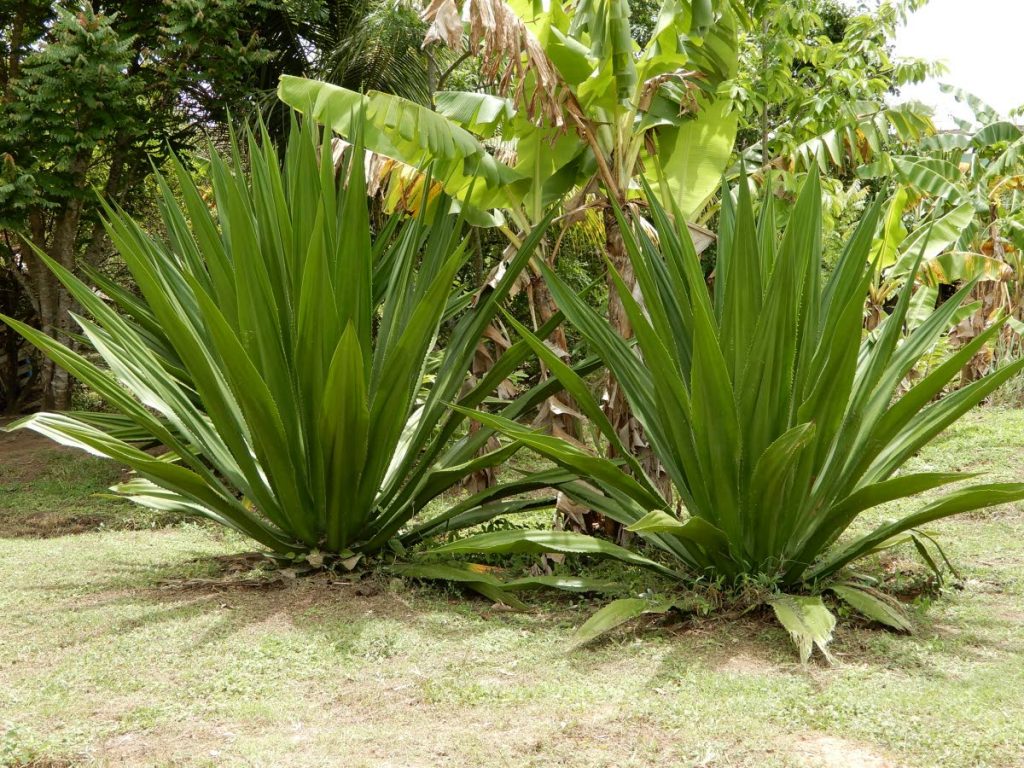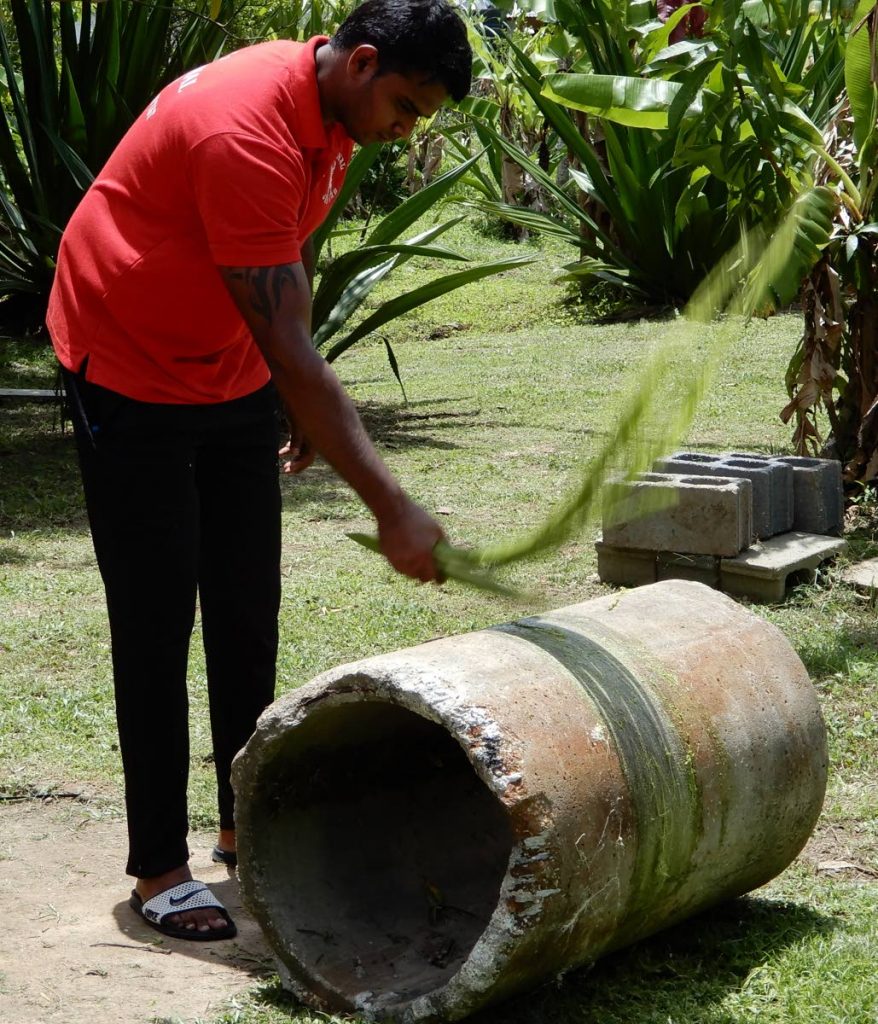Agave and jab jab

What does the agave plant and the jab jab character have in common? You would never have guessed it. It’s the whip!
On a sunny Saturday in early July, our club, the Eastern Horticultural Club, took a trip to the home of Ronald Alfred on Whipmaster Avenue, Balmain, Couva.
Quick glimpses of jab jabs with whips on Carnival days over the years, never revealed the meaning of, “If you can’t take lash, don’t play”, the rule of the Original Jab Jab Carnival band. Mr Alfred made a clear distinction between the Original Jab Jab band who fight with whips and jab molassie and the blue devils. Mr Alfred’s grandfather was the original jab jab and the 60 year old family artform has survived three generations amidst decades of resistance, threats and attacks. The Alfred family’s involvement in the art stems from Kali worship in a small village in India and Mr Alfred has been part of the band from age 14.

This folklore character, the jab jab, is the one usually seen at Carnival in a striped costume of knee length pants and top decorated with mirrors and bells meant to distract his opponent. They wear alpargatas so that they would be light on their feet and the horned devil masks hide the face so that opponents cannot see who they are fighting with. The whip is made from the fibres of the beaten and stripped agave leaf.
The Alfred family explained the significance and complexities of getting oneself prepared for a jab jab face off when rival groups from different villages try to out whip each other. When a jab jab cracks his whip, the gunshot sound alone will drive fear into anyone’s heart. In fact when none of us were paying attention to what Mr Alfred was doing, he cracked his whip and made us all jump! A jab jab wears no protective clothing to fend off the whip. It is a contest to see who can take the licks!
Mr Alfred, also known as the whipmaster, is of the firm belief that the ancestors continue to play a role in the happenings of today. He emphasised that integrity coupled with keeping the tradition alive is the way he pays homage to his ancestors. His love and passion for the culture shone throughout his presentation. He stressed that money is not the driving force behind what he does.
His purpose is to ply his craft, get the youths involved in something productive, and to educate others both locally and abroad about the culture. The more than 100 trophies on display in his living room is evidence of the success of the band in this regard. His aim is to leave a legacy for his family just as his father had done for him. He also indicated that he could not do what he loves without the support of his family which is also very involved in all stages of the mas. Salima Buckreedee-Alfred, the first and only female member of the band, is central to this and makes all the costumes for the band.

In preparing for the Carnival “war” it is important that band members be clean in mind and body to be able to withstand fights, attacks and cuts. Mr Alfred’s father was the victim of a vicious attack. Forty days before Carnival begins the band members prepare themselves by fasting, anointing their skin with honey, saffron and herbs including ruction bush. The men do not simply pick or take these herbs but ask Mother Nature for them. On the eve of Carnival, they take a bush bath and must take a lash on their bare backs from the whipmaster. Only those who can withstand the lash may play devil mas.

Mr Alfred also gave a detailed demonstration of the manufacturing of the lash whip from the lash plant or agave that is cultivated on the training ground and carefully monitored by the phases of the moon. When the leaves become yellow they are ready to harvest. The spines on the edges of the leaves are trimmed off and the main part beaten on a hard surface. By this means the soft pulp of the leaf separates from the fibres, the water is squeezed out and the pulp discarded. The fibres are dried, rinsed and dried again and are now ready to make the whip. We were shown how the fibres are twisted one way and then the other to become rope. To join in more fibres for additional length the ends are overlapped and twisting continues. When the rope is long enough the fibres are thinned out and the end knotted. To finish it off stray hairs are singed off with a cigarette lighter to produce a stylish whip that can crackle like a gunshot, cut like a razor and curtail life in minutes. However, Mr Alfred emphasised that the whip must be clean, there must be no additions of glass or nails to the end of the rope.
Lastly we were treated to a presentation by the costumed players of the mas accompanied by the jingling of bells and the ear splitting cracks of the whips. The members of the band danced onto the field and demonstrated how they crack the whips and how to fight an opponent.
It was an experience where we saw not only how the jab jab whip was made but also through involvement of family and friends traditions are maintained. All presentations were done with passion and pride and at the end we all had greater appreciation of the show that is put on at Carnival time and look forward to seeing them at Carnival 2019.
We wish to say a hearty thank you for their presentation and hospitality which came from the heart.


Comments
"Agave and jab jab"